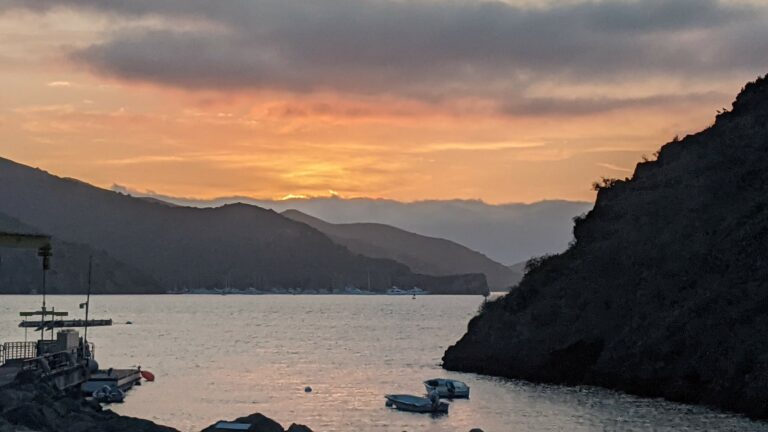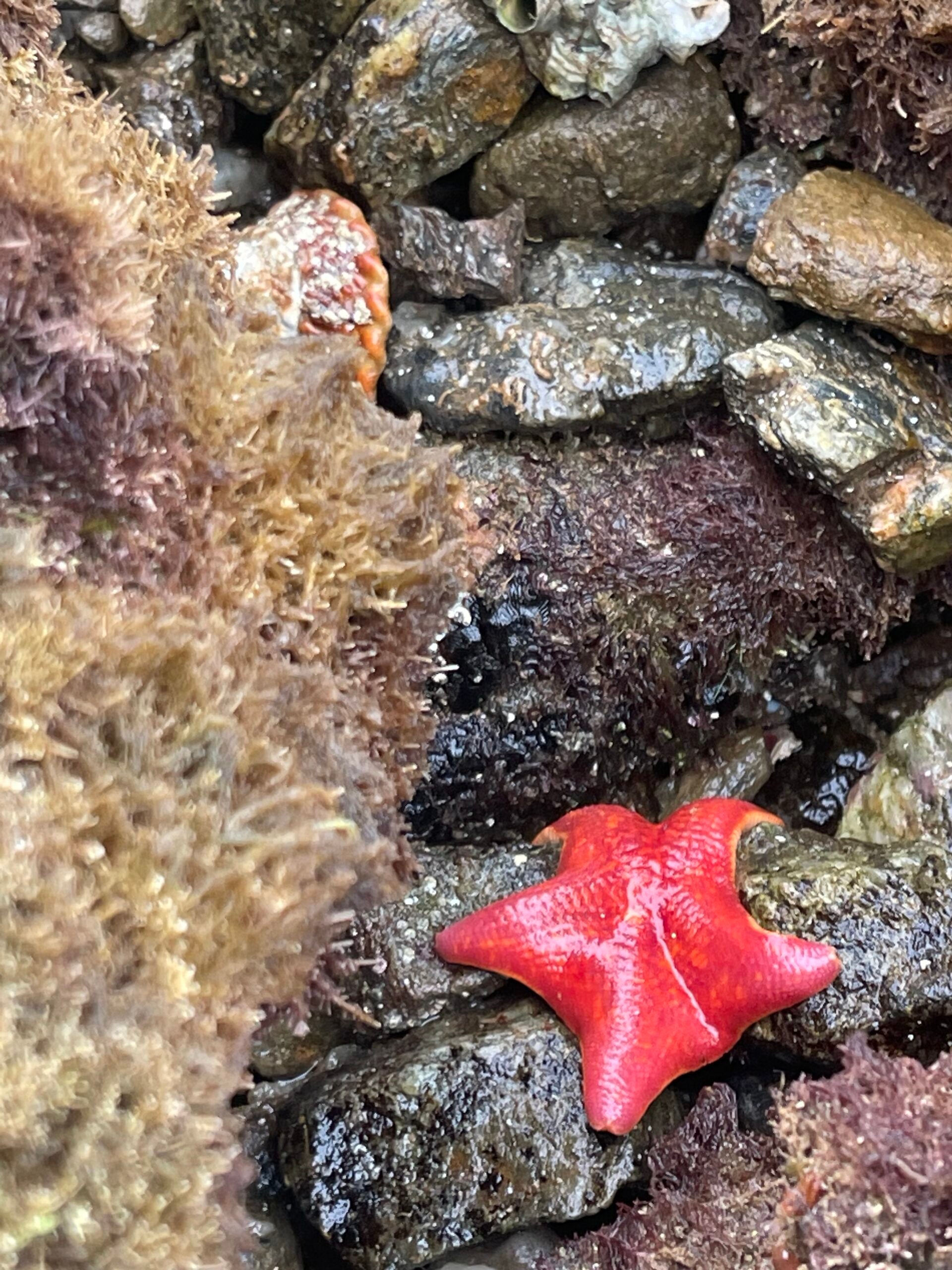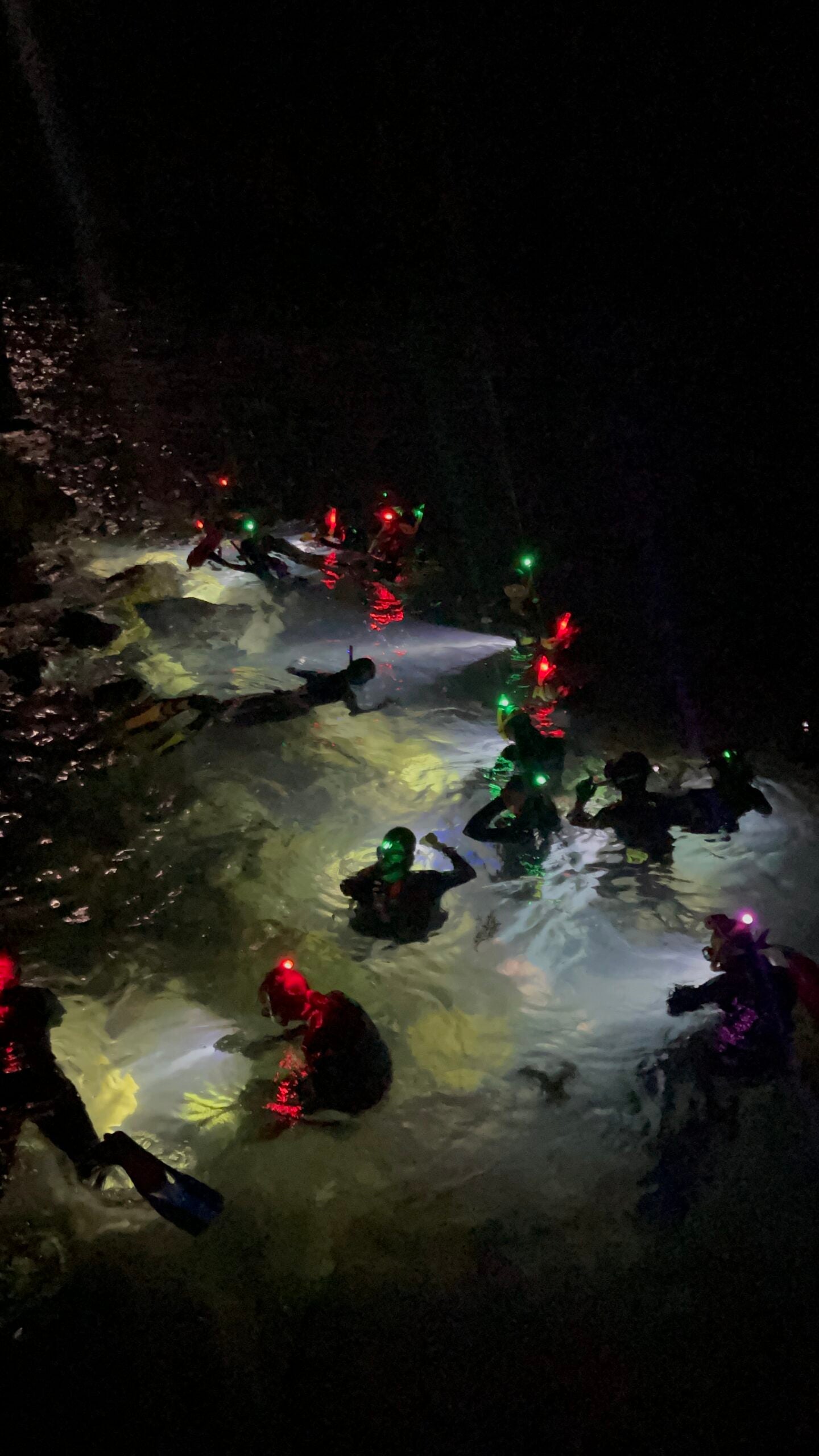
Sharing the ocean with others on Catalina Island

I have been fortunate enough to live near the ocean my entire life, and I grew up in awe of its great power and beauty. Diving through waves or seeing the immensity of the ocean from atop cliffs, I found it always put things in perspective. You can’t fight the ocean, you can just ride the waves.
My name is Juliette Koepke. I am an undergraduate at USC, and I had the immense privilege of interning at the Wrigley Marine Science Center (WMSC) on Catalina Island this summer.
The sky was grey-blue on a very windy morning as I boarded the red-and-white Miss Christi in San Pedro. The boat hummed and rumbled to life as we set out to WMSC. We passed the lighthouse guarding the harbor’s mouth, the ocean stretched out before us, and the land fell away. I saw pelicans gliding by with large, open wings that gracefully gripped the air as they sailed through the mist and over the glass surface of the water.
As the boat curved around an unfamiliar mountain (I soon came to know it as Blue Cavern Trail) and slowly sidled up to the dock, I got my first glimpse of WMSC. Plants were scattered around the red rock earth of the hill, the water splashing against a cave in the hillside. The hill was covered with beautiful cactus I had never seen before, which I now know is the endemic “Catalina live-forever.” I would come to know this place quite well, and I would get to share my appreciation for it with other people through the various programs I would assist with.
Once Maymester arrived, my days quickly became packed in the best possible way. I led hikes up trails like Deer Valley, Blue Cavern trail, and Mount Wrigley; helped guide kayak and snorkeling expeditions; took care of our sea creatures; planned events; and more.
One of my most memorable experiences was working with the empowHER group, a program designed to give girls from underserved communities experiences to help them thrive and achieve success. The first day, I enthusiastically showed them the sea creatures in our touch tanks. I remember passing around a sea urchin and how excited but nervous some of the girls were to touch and hold it. For some, I would hold it with them as they gained courage to hold it on their own.
I also remember passing around our little crab, and this crab is very sassy. He liked to jerk himself back into his shell really fast to make whoever was holding him get startled and drop him back in the water. He was trying to freak them out and occasionally, he did. It was so fun to hear them laughing and gaining confidence to carefully hold him. I really enjoyed sharing my love and appreciation of the ocean with them and seeing the excitement in their eyes.
The next day, we had a snorkeling expedition. For many of these girls, this was a first-time introduction to the ocean. It was a huge endeavor to get all of the girls into wetsuits and into snorkeling gear. A lot weren’t strong swimmers. Some were very nervous. One of the girls I met the previous day made me promise I would be in the water with her the whole time, which I promised happily. She was so nervous to get in, but it was so rewarding when she finally did.

I led the group around and showed them some of my favorite things in our cove. I pointed out some sea urchins, showed them a lobster, and one asked what the spiny antennae were in front of its face. I remember pointing out our state fish, the grumpy-faced, bright-orange Garibaldi, and I showed them different types of kelp and the air sacs that help them float. I also found them an apical meristem, one of my favorite patterns in the sea.
At one point, they saw me free dive to point something out, and they wanted to try it. By the end of the day, they were doing flips in the water, and every single one of them didn’t want to get out. I remember one of them told me I was her favorite, and when you get a compliment from a middle schooler that means a lot. They went from being so terrified to get in the water to not wanting to leave. I’ll never forget that.
Some of the coolest (and there is steep competition) activities I got to help run were the night snorkels as the amazing Lorraine Sadler and Meghan MacGregor pointed out eels, worms, and octopi (oh my!). Once, Lorraine even found everyone a pregnant horn shark! At night, the usually lethargic-looking lobsters zip through the water.
If you are quiet and listen closely, you can hear crackling in the water from all of the creatures communicating. It’s like trolling through radio waves in another language. Once far out into the cove, we turn off our dive lights, let our eyes adjust, and the real magic begins. When you whoosh your hands through the water, a trail of bioluminescent bubbles light up and sparkle in the trail of the disturbed water like underwater fairy dust.
Between the hiking, snorkeling, kayaking, and living on Catalina, there are many MANY perks to this internship, but one of the hidden ones, and my favorite, is the people. Everyone is so welcoming. It really makes WMSC a second home. Being around people who are such experts, having access to their wealth of knowledge, and being able to learn from them is a true gift.
I loved Catalina and our ocean even more with every new thing I learned, and I was then able to share everything with students and visitors. In this way, we all learned more about our environment and how to become part of a more sustainable future.